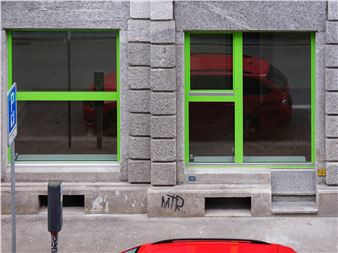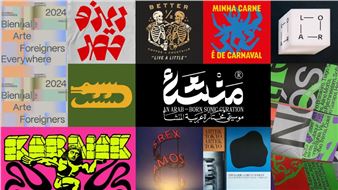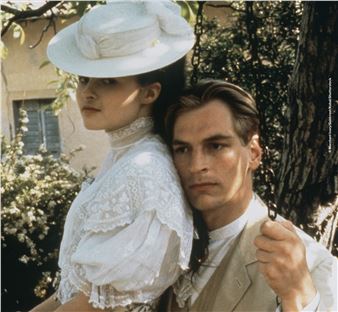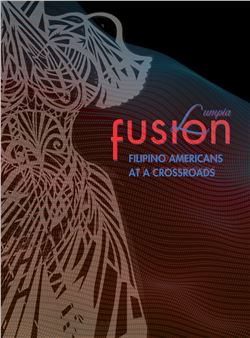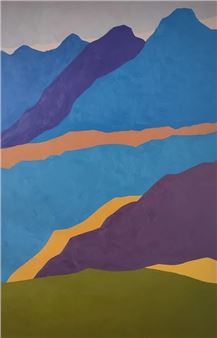Biographies (un)authorized
“Weirdo”, “freak”, “misfit”, “lunatic” – such painful terms were directed to the creators to whom the exhibition Biographies (un)authorized has been devoted. The reason why they heard those hurtful words, were artistic needs that stood in opposition to a certain pattern of life and behavior, that was well-established in the society: rural origins determined everyday life and set the standards of folk art, but they did not intend to satisfy either.
The title of the exhibition suggest a certain ambiguity in the lives of these artists and should be understood perversely: imposing on them their way of being by pointing to the irrationality of their actions, created a situation, in which these artists ceased to be owners of their biography. They regained it through a creative act: sometimes indisputable in its pronunciation (in case of WnД™k or Mucha), another time ephemeral (as in case of °Вѕ±Е›ІФѕ±ґЗІх), re-authorizing their lives, this time “in their own way”. “Authorization” was happening during the creative act: at this point they were truly free, they handled themselves and their life on their own, because they acted exactly as they wanted.
The need to create was born in Szczepan Mucha as a result of a certain tragic situation: he was accused of poaching and sent to prison for several months. He came back a changed man, full of righteous resentment. He decided to sculpt: he started his work from the fence surrounding the house. The sculptor set up over two meters high ,,backyard bogeymen” in his yard, and in the surroundings of the house, but also on its top and in the windows, he placed devils and naked figures of women and men, proudly displaying intimate places. He knew perfectly well, that his art would shock and that in this way he would challenge the world, that conspired against him. Mucha’s desire was to create space on his own terms and discourage society from contact, and thus isolate himself from the life of the village, that laughed at his work.
We may observe equally tragic life story in case of Maria Wnęk. This painter from Nowy Sącz, one of the most important art brut personalities, believed that her neighbors colluded against her. In her paintings and in the texts they contained, she commented on the actions of the surroundings. She considered herself a divine messenger, so she spoke categorically about all mankind, conveying admonitions sent to her by holy figures and presenting apocalyptic visions of God’s punishment. She was mentally ill, so she perceived the world accordingly. For example, she claimed, that the source of human aversion are her paintings and apostleship included in them. Maria Wnęk was considered lunatic in her home village.

Recommended for you
“Weirdo”, “freak”, “misfit”, “lunatic” – such painful terms were directed to the creators to whom the exhibition Biographies (un)authorized has been devoted. The reason why they heard those hurtful words, were artistic needs that stood in opposition to a certain pattern of life and behavior, that was well-established in the society: rural origins determined everyday life and set the standards of folk art, but they did not intend to satisfy either.
The title of the exhibition suggest a certain ambiguity in the lives of these artists and should be understood perversely: imposing on them their way of being by pointing to the irrationality of their actions, created a situation, in which these artists ceased to be owners of their biography. They regained it through a creative act: sometimes indisputable in its pronunciation (in case of WnД™k or Mucha), another time ephemeral (as in case of °Вѕ±Е›ІФѕ±ґЗІх), re-authorizing their lives, this time “in their own way”. “Authorization” was happening during the creative act: at this point they were truly free, they handled themselves and their life on their own, because they acted exactly as they wanted.
The need to create was born in Szczepan Mucha as a result of a certain tragic situation: he was accused of poaching and sent to prison for several months. He came back a changed man, full of righteous resentment. He decided to sculpt: he started his work from the fence surrounding the house. The sculptor set up over two meters high ,,backyard bogeymen” in his yard, and in the surroundings of the house, but also on its top and in the windows, he placed devils and naked figures of women and men, proudly displaying intimate places. He knew perfectly well, that his art would shock and that in this way he would challenge the world, that conspired against him. Mucha’s desire was to create space on his own terms and discourage society from contact, and thus isolate himself from the life of the village, that laughed at his work.
We may observe equally tragic life story in case of Maria Wnęk. This painter from Nowy Sącz, one of the most important art brut personalities, believed that her neighbors colluded against her. In her paintings and in the texts they contained, she commented on the actions of the surroundings. She considered herself a divine messenger, so she spoke categorically about all mankind, conveying admonitions sent to her by holy figures and presenting apocalyptic visions of God’s punishment. She was mentally ill, so she perceived the world accordingly. For example, she claimed, that the source of human aversion are her paintings and apostleship included in them. Maria Wnęk was considered lunatic in her home village.

 ARTISTS
ARTISTS







